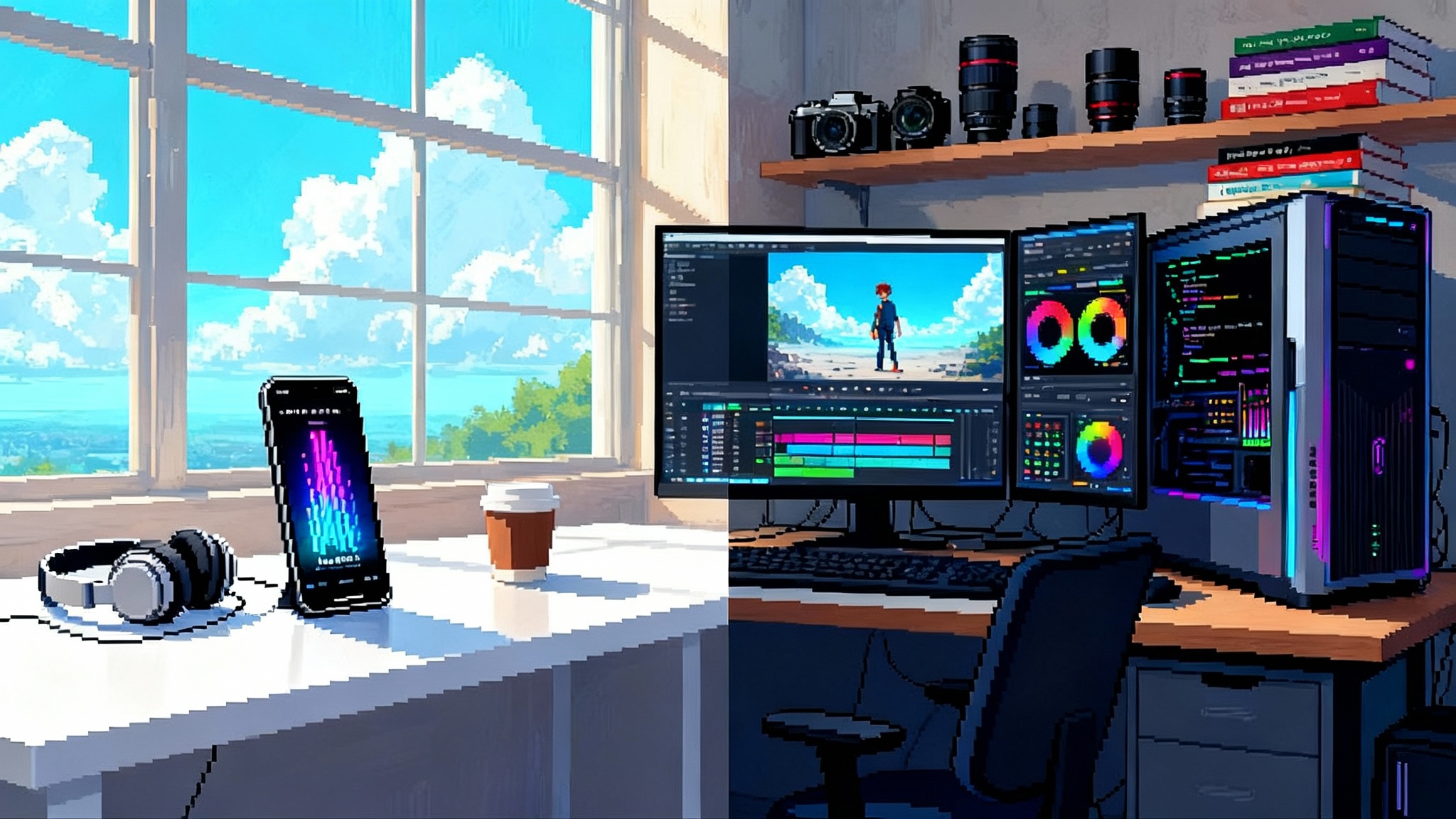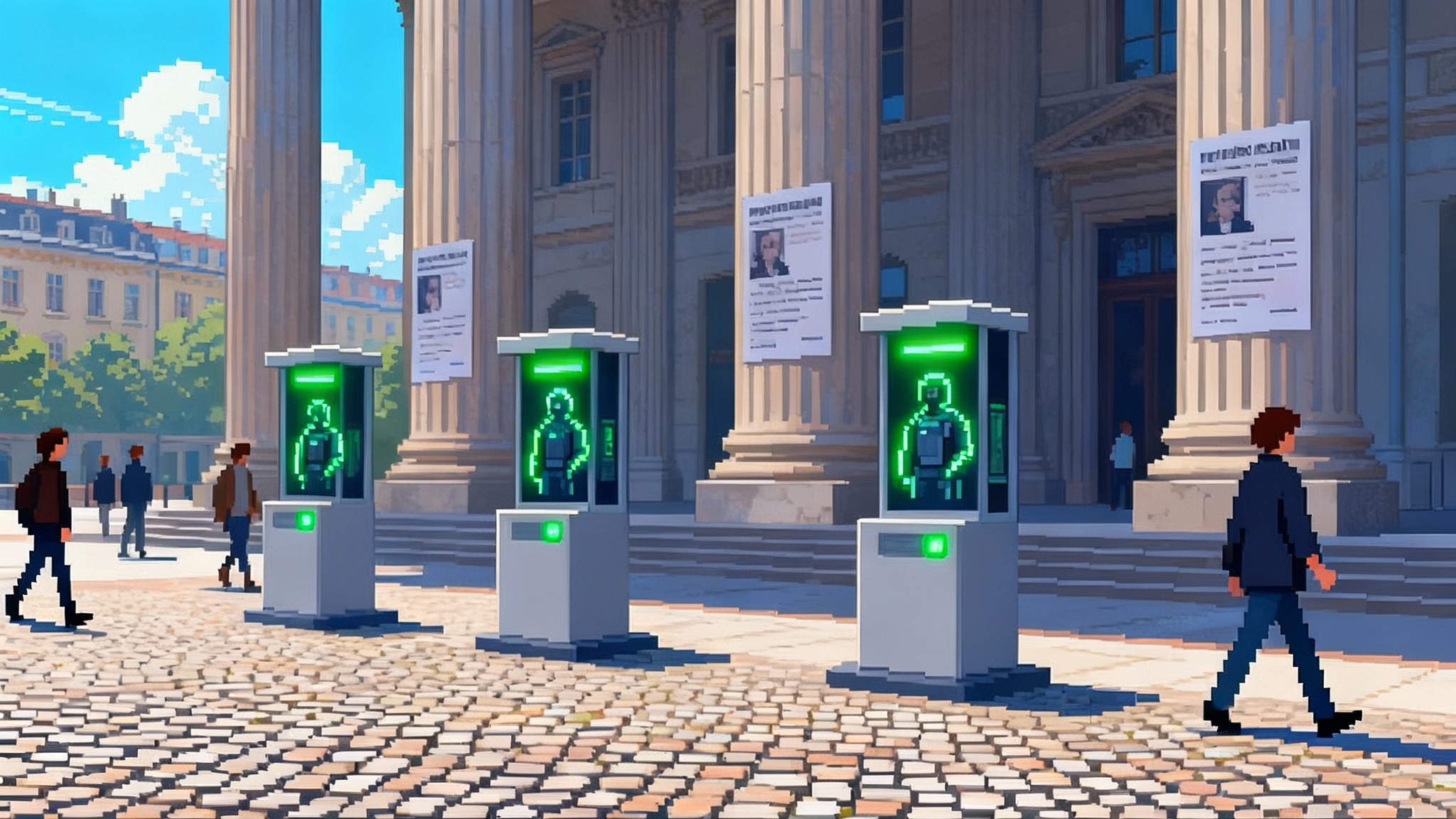Compiled Video Arrives: Sora 2 Meets Disney’s Crackdown
OpenAI turns Sora 2 into a social video platform as Disney moves to rein in unauthorized characters. Video stops being filmed and starts being compiled, making consent, likeness, and IP programmable and enforceable.

Breaking: video stops being filmed and starts being compiled
Two headlines landed within hours and told one story. OpenAI pushed Sora 2 from tool to social platform, a feed where anyone can spin up scenes in seconds. On September 30, 2025, reporters noted a United States and Canada rollout as a standalone app, with early creators testing collaborative prompts and remixable scenes. See Reuters coverage on the Sora 2 standalone app.
That same day, Disney reportedly told Character.AI to halt the use of protected characters in conversational experiences, escalating the fight over programmable likeness and brand worlds. Reuters also covered the Disney letter to Character.AI. Whether you view this as overdue enforcement or overreach, the combined signal is clear: moving images are shifting from captured by cameras to compiled by code, and consent becomes a runtime concept rather than a post hoc email thread.
This is a hinge moment. Video is becoming software. The objects inside it are addressable. The behaviors are programmable. The rights are enforceable at render time. Markets will reprice attention for a reality where supply is not hours we can film, but instructions we can compile.
From captured to compiled
For a century, video meant pointing a camera at reality and collecting photons. Even animation relied on a camera pointed at drawings. Compiled video flips the stack. You write instructions, assets, and constraints. A model renders the result. Think of it like building a website. You do not store every page as a static screenshot. You declare layout and behavior, then the browser renders what the user requests. Sora style systems propose a similar pipeline for moving images.
A director in a captured world asks for a reshoot if the light is wrong. In a compiled world, you nudge a scene graph or prompt and the system rebuilds the shot. The edit timeline becomes a recipe log. The hero’s hair is now a parameter. Weather is a function. Camera is a policy. Continuity is a dataset. The line between pre production, production, and post shrinks into a programmable loop.
That loop is inherently social. If people can fork code, they can fork video. Remix becomes default behavior. Audiences do not just watch. They compile variants in real time, with or without the original cast. That is why consent and likeness now belong in the language of software engineering.
Consent and likeness as programmable primitives
If video is software, consent is not a checkbox at upload. It is a permission set that travels with your likeness. In programming, a primitive is a basic building block like a string or integer. We need a consent primitive that functions like a cryptographic key with usage rules. It should answer machine enforceable questions: who can compile my face, under what conditions, for which audiences, and for how long.
Here is a practical structure that can exist within current technical and policy norms:
- Identity binding: a person has a verified identity in a privacy preserving wallet, tied to a biometric template they control. It is not owned by a platform.
- Likeness tokens: the person mints tokens that grant narrow compilation rights. Each carries scope, duration, attribution terms, and revocation rights. Think of a gig work permit for your face.
- Policy checks at render time: when a model compiles a video containing your likeness, it queries the token, checks scope, logs the use, and embeds a signed receipt into provenance metadata.
- Revocation by default: if consent is revoked, future compiles fail and compliant players mark previously rendered works as orphaned, with visible status.
This will resemble digital rights management, but flipped in favor of the individual. The key difference is symmetry. People and companies both issue programmable terms for likeness and intellectual property. Models read those terms before the render, not after a takedown.
For a deeper dive on permission as a system layer, see our discussion of the invisible policy stack, where policy becomes the real power layer of AI.
Intellectual property becomes a live API
Studios have treated intellectual property as vaults of files and sealed masters. In a compiled reality, IP behaves more like an application programming interface than a folder. A character is not just a collection of frames. It is an endpoint with parameters that define voice, posture, style, costume, and plot constraints. Access is metered by policy. Rate limits and pricing can change with demand.
Imagine a studio turning a beloved character into a service. Creators request scenes with parameters like setting, mood, and approved arcs. The service enforces guardrails. It can reject a scene that violates canon or age ratings. It can queue manual review for edge cases. It can charge by complexity, audience size, and commercial intent. It can issue time limited licenses with automatic reporting. Most importantly, it can update in minutes when sentiment or legal exposure changes.
This is not science fiction. It is the only workable way to let fans co create without losing control. It replaces whack a mole takedowns with predictable revenue.
Attention markets pivot from filming scarcity to compilation abundance
Captured video was constrained by production capacity. You needed sets, crews, permits, and time. Attention flowed to those who could afford to film and distribute. Compiled video collapses many of those costs. The constraint shifts to ideas, taste, and rights. Supply expands toward infinity. That forces new economics of attention.
- Scarcity shifts from footage to permission. If anyone can synthesize an action scene, the scarce resource is permission to use a famous character, a recognizable face, or a protected style.
- Distribution differentiates on provenance. Feeds will rank compilations that carry verifiable consent and clear IP status. Opaque content will sink.
- Pricing moves to runtime. Instead of paying for a download, markets meter by compiled minutes, audience size, and downstream reuse.
- Creators gain leverage through specificity. Owning distinctive prompts, scene graphs, and narrative formats becomes as valuable as owning cameras once was.
Platforms that build native economics for permissioned compilation will attract the best talent. Studios that ship programmable access will win the most community energy.
The tech floor rises: hour scale, remixable video is coming fast
Hardware flips future tense into present tense. In September 2025, Nvidia announced Rubin CPX class processors designed for million token contexts and video native inference with rack scale memory and bandwidth. The headline promise is straightforward. Models will reason across hour length scenes with consistent characters and settings. When that lands, expect three outcomes:
- Long form compilation: creators will generate episodes and films in a single pass, then revise with surgical edits. The creative unit shifts from shot to act.
- Real time co creation: live audiences suggest changes mid scene and the system updates in the next beat. Think sports style replay for narrative.
- Persistent characters: models keep stable identities and emotional arcs because they can attend to far more context. Character endpoints stop being gimmicks and become products.
This intersects with the politics of compute. When compute supply tightens, policy choices decide who gets to compile what, not just who has the best ideas.
Provenance by default, not as a sticker
Provenance is the chain of custody for media. Today it is mostly a label after the fact. In a compiled reality it must be intrinsic and verifiable at load time. That implies three defaults:
- Compile receipts: every render emits a signed record that names the model, the inputs, the rights checked, and the policy decisions taken. The receipt lives inside the file and in a public log.
- Likeness and IP checks: players and feeds verify receipts before play, much like browsers check certificates before loading a site.
- Audit trails for edits: forks and remixes carry forward the receipts they use and append their own. A viral clip becomes a provable family tree.
When provenance is default, creators gain credibility, platforms gain trust, and rights holders gain visibility into how their assets flow. Viewers also gain a way to tell sanctioned co creation from opportunistic mimicry.
New aesthetic norms of proof
The look of truth changes as synthesis improves. People have trusted lenses and microphones more than models. That bias will fade as cameras and compilers both produce plausible scenes. We will need new habits of proof.
- Proof is an interaction: viewers expect a tap to inspect consent status, model version, and edit history. Proof becomes part of the player UI.
- Raw is a spectrum: audiences will parse the difference between captured, compiled, and hybrid media. Labels matter less than the receipts behind them.
- Reputation stacks: creators who consistently publish receipts will build reputational gravity. Anonymous content without receipts will struggle to cross platform thresholds.
For the ethical frame around consent and memory, see our perspective on the moral economy of memory.
The policy backdrop gets real
Disney’s letter crystallized how quickly co creation crosses legal lines when programmable likeness meets beloved worlds. On September 30, 2025, Reuters reported that Disney sent a cease and desist to Character.AI, citing unauthorized use of protected characters and brand harms. Whether you see this as an overdue move or a chilling signal, the lesson is the same. Static licenses and email takedowns do not scale to compiled worlds.
Expect near term regulatory attention to cluster around three questions:
- Pre render responsibility: who must check for permission before a model compiles a scene containing a protected face or character.
- Sufficient provenance: what minimum receipts are required for distribution and ranking in public feeds.
- Minors’ protections: how to enforce age based rules when likeness is programmable and remixable.
A consent ledger that works in the wild
If this sounds heavy, consider how payments work on the web. We overcome the chaos of cards and currencies with processors that tokenize sensitive information and broker trust across merchants and banks. Likeness and IP need a similar neutral layer.
A consent ledger could operate as a shared utility with three roles:
- Individuals: enroll identity, create likeness tokens, set scopes and prices, and revoke with a slider.
- Rights holders: publish character and style endpoints with explicit terms, tiers, and gates. Offer free tiers for fan creativity and priced tiers for commercial use.
- Platforms: check tokens and endpoints at render time and at play time, record receipts, and surface status to viewers by default.
Interoperability is non negotiable. If rights only work inside one platform, the feed fragments and creators lose global audiences. The first company to make consent portable will become the Stripe of compiled media.
Product choices that will age well
Builders and buyers can make decisions today that will still look smart in two years:
- Treat likeness like a key, not a file. Store policies with the person, not the platform.
- Refuse to compile without checks. Render engines should fail closed when consent or IP terms are missing and show a visible error that guides creators to fix it.
- Put proof in the player. Receipts should live in the playback controls so trust becomes a default interaction.
- Price by scope, not pixels. Charge for rights, audience size, and reuse. Give away resolution.
- Moderate as policy code. Encode what is allowed and enforce in the engine instead of relying on brittle content reviews.
What the next year will feel like
Short form video becomes a programmable playground. Within weeks, the same tools spill into hour length experiments where fans and franchises dance around each other, sometimes gracefully, sometimes not. Studios test character endpoints. Creator collectives pool likeness to build rotating casts. Platforms compete on how clearly they display permission status.
There will be missteps. A beloved character will appear in a clip that crosses a line. A politician will claim a deepfake defense for a real recording. A new genre will emerge that displays consent tokens as part of the art. The point is not that everything will be tidy. The point is that we finally have a programmable way to make it less chaotic than the takedown era.
The takeaways
- The hinge moment is here. Social compilation on the front end, rights enforcement on the back end, and hardware that makes long form synthesis routine.
- Primitives must be explicit. Consent and likeness need keys, scopes, and receipts. Intellectual property needs endpoints, policies, and prices.
- Provenance is a product feature. If it is not in the player, it will not shape norms.
- Markets will reward permission. As supply explodes, permission becomes the scarce good.
Closing scene
When cameras invented cinema, the world learned to see with machines. As compilers reinvent video, the world will learn to program what it sees. OpenAI’s social push with Sora 2 and Disney’s hard stop at Character.AI show the stakes. Either we encode consent, likeness, and intellectual property as first class citizens in our media stacks, or we keep sending emails into the storm. The compiled future will not wait. Our job is to make it consent aware, provenance fluent, and creatively abundant from the start.








